While there’s no shortage of boring or cliche manga available in English — even with fewer titles being released this year — grade-A turkeys are going the way of the dodo. I had so much difficulty compiling this year’s Manga Hall of Shame Nominees, in fact, that I turned to Twitter for help. Some folks named The Melancholy of Suzumiya Haruhi-chan for being dull and incomprehensible; others fingered Saving Life for unsexy fanservice and dopey characters; one person chastised You Higuri for foisting Nighthead Genesis on the world; and one brave soul bucked conventional wisdom by naming AX: A Collection of Alternative Manga as her Worst of 2010. (You can see more reader nominations at #badmanga2010.) The conversation made me laugh, but it also helped me clarify my own thinking about the subject. Common to all five titles on this year’s list is a flagrant disregard for the reader; no matter how interesting the initial premise, these stories derailed quickly, thanks to lousy artwork, disjointed storytelling, and/or a juvenile fixation on body parts and bodily functions.
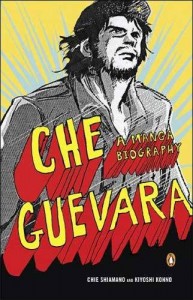 5. Che Guevara: A Manga Biography
5. Che Guevara: A Manga Biography
By Kiyoshi Konno and Chie Shimano • Penguin Books
In the opening pages of Che Guevara: A Manga Biography, the creators promise to reveal the flesh-and-blood person behind the iconic images on t-shirts and posters. The authors never deliver on that promise, however, instead relying heavily on Guevara’s own self-promoting essays for most of their information. That commitment to primary sources might be laudable if the authors made any effort to reveal the inconsistencies in Guevara’s beliefs, but Guevara’s heroism is never in doubt; he’s always portrayed as brave, strong, and capable, even when abandoning his first family or serving in Fidel Castro’s administration. (The authors also gloss over Guevara’s enthusiasm for the Stalinist regime, perhaps because it’s hard to put a positive spin on anyone or anything associated with that period in Soviet history.) More frustrating still is how choppy and uneven the manga is; the authors compress major battles and periods of Guevara’s life into one or two pages, leaving no room for them to explore these events with any nuance. Clumsy character designs and endless talking-head scenes complete the not-so-pretty picture.
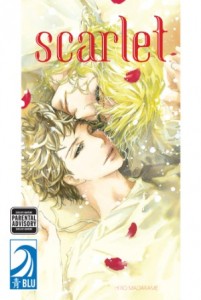 4. Scarlet
4. Scarlet
By Hiro Madarame • BLU Manga
Hiro Madarame may draw achingly pretty manga, but her stories are surprisingly ugly and unpleasant, filled with Tragically Gay Characters and manipulative, shrewish women who drive men to homosexuality. The nadir of this slim anthology is the titular story, which includes a brutal rape scene that’s disturbing both for its sadism (it wouldn’t be out of place in David Fincher’s ultra-gory Seven) and for the speed with which the victim and the attacker reconcile. It’s true that many domestic abuse victims go through cycles of leaving and reuniting with their tormentors, but Madarame presents this act of violence as testament to her characters’ deep attachment to one another, rather than evidence of their pathologically unhealthy relationship. Call me a curmudgeonly old feminist if you must, but romanticizing rape and possessive behavior — no matter what the gender or sexual orientation of the parties involved — just isn’t very sexy. —Reviewed at The Manga Critic, 8/31/10
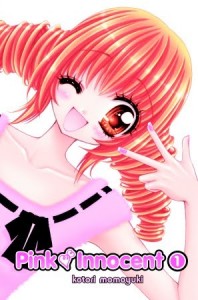 3. Pink Innocent
3. Pink Innocent
By Kotori Momoyuki • Del Rey
The title screams soft-core porn, but Pink Innocent is, in fact, G-rated shojo comedy. The story revolves around Kotona, a ditzy rich girl who stalks and smothers Reiji, a befuddled nerd who finds Kotona almost as annoying as readers will. The jokes are profoundly unfunny: Kotona destroys Reiji’s computers, burns down his apartment, and stars in her class production of Romeo and Juliet so that she can woo him. (One shudders to think what she’ll do in future volumes: carpet bomb his home by accident? Run over his brother with a car?) Adding insult to injury is the artwork: it’s sub-par Arina Tanemura, with sparkles on top of sparkles, and a heroine so saucer-eyed she resembles a chibi squid. Unless Orange Planet was a bigger hit than I remembered, it’s hard to fathom what inspired Del Rey to license Pink Innocent; shojo fans deserve better than this dumb, repetitive stinker.
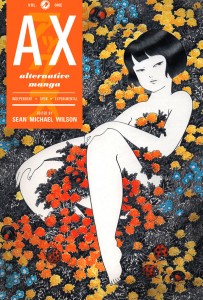 2. “Black Sushi Party Piece” and “Arizona Sizzlet,” AX: An Alternative Collection of Manga
2. “Black Sushi Party Piece” and “Arizona Sizzlet,” AX: An Alternative Collection of Manga
Edited by Sean Michael Wilson • Top Shelf
David Welsh said it best when he declared, “While AX is one of the books I’m happiest to have bought this year, it does contain some seriously bad manga.” Many of the stories in AX push the boundaries of good taste, aesthetic and otherwise, but the best of them — “Puppy Love,” “Six Paths of Wealth,” “Push-Pin Woman” — are genuinely thought-provoking. Two, however, earn demerits for their sheer pointlessness. The first, “Black Sushi Party Piece,” is a festival of excrement, anuses, and Butt Head-ugly character designs, with no real ambition other than to turn the stomach. The second, “Arizona Sizzler,” features a desert showdown between an irritated young woman and an enormous set of genitals. I have no doubt that in the hands of someone like Terry Gilliam this kind of cock-and-balls story might be funny, but the crudeness of the execution robs “Sizzler” of any potential playfulness; instead, it seems like a dumb joke dragged out to epically unfunny lengths, the manga equivalent of a Benny Hill sketch. —Reviewed at The Manga Critic, 5/21/10
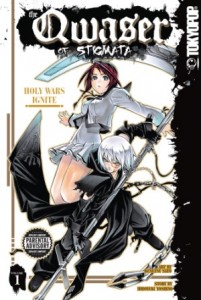 1. The Qwaser of Stigmata
1. The Qwaser of Stigmata
Story by Hiroyuki Yoshino • Art by Kenetsu Satō • Tokyopop
The creators of Qwaser of Stigmata have erected a sturdy framework on which to hang boobs and bishonen: their story takes place at a parochial boarding school filled with nubile teens, allowing them to indulge every manner of fetish, from schoolgirls in short skirts to hotties of the cloth. Alas, Hiroyuki Yoshino and Kenetsu Sato’s only novel idea was to substitute Russian Orthodoxy for Catholicism, the go-to religion of manga-ka in search of cool outfits and arcane rituals. The rest of the story is a fever-dream of incoherent fight scenes, topless girls, and… breast feeding. (That’s the source of the characters’ super-strength: breast milk. I’m not making this up. Really.) The central plot, which revolves around a Russian icon, makes even less sense than the fight scenes; I’m not an expert on any form of Eastern Orthodoxy, but I don’t think it’s a stretch to say that an observant person would find it offensive. (Or silly.) The saddest part is that an imaginative artist could write a boffo manga about the Russian Orthodox Church, which has a long and rich history, filled with mystics, heretics, and believers so hard core they’d set fire to themselves before accepting small changes to the liturgy. —Reviewed at The Manga Critic, 8/11/10
So… I turn the floor over to you: what titles do you think belong in this year’s Manga Hall of Shame?
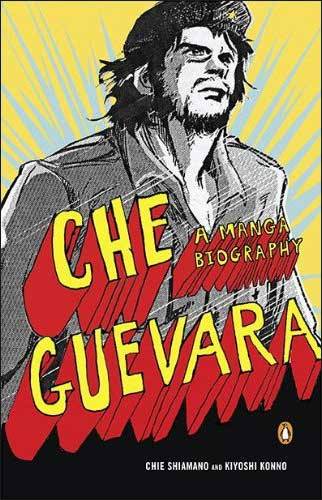

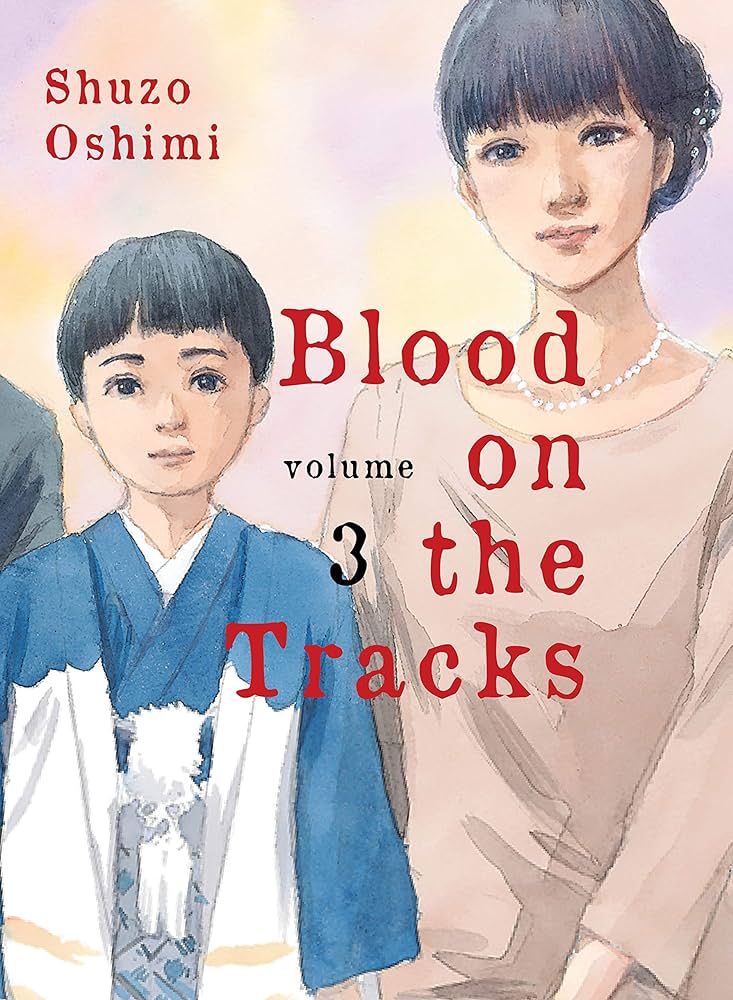
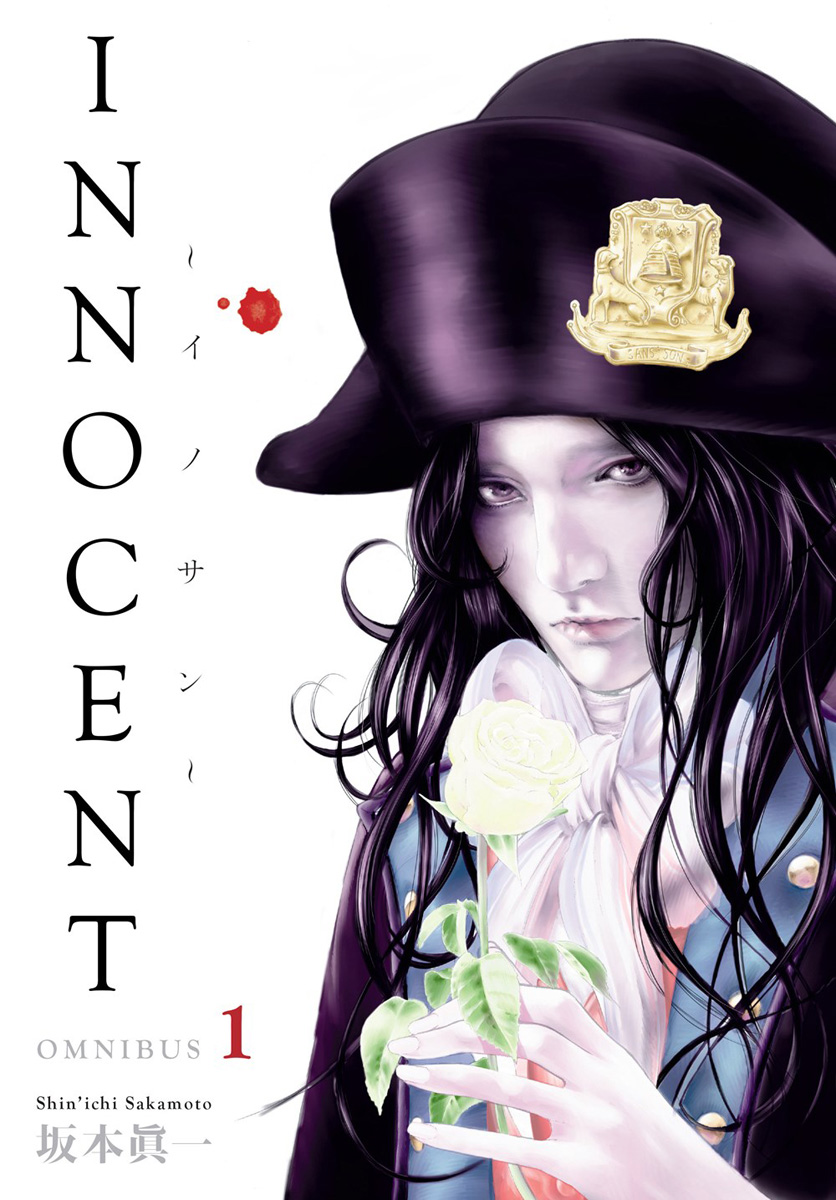
Erica Friedman says:
Not properly manga, I have to nominate the Wicked City Light Novels by Hideyuki Kikuchi (Seven Seas). The are absolute howlingly funny/bad. The mix of bad, bad magic, demonic entities, sex and violence laves me breathless with hilarity every time I read a passage. So very, very bad. I can’t blame the translation, honestly, I think it’s probably quite good and it’s just the writing that’s so incredibly labored.
Katherine Dacey says:
I’m relieved to know I’m not the only one who finds Kikuchi unreadable. A Wind Named Amnesia was flat-out terrible; it had about 20 good pages in the beginning, then rapidly descended into tedious nonsense. (There’s even a tomahawk-wielding Indian, presumably because the story takes place in the US.)
david brothers says:
“Kotona destroys Reiji’s computers, burns down his apartment, and stars in her class production of Romeo and Juliet so that she can woo him”
I love that all of these are equally awful!
I gave up on “So bad it’s good” as being a thing I ever actually enjoy, but Qwaser just sounds creepy and awful. Gantz is creepy and awful, but to an extent that I’m endlessly fascinated/repulsed/disgusted. Qwaser seems more like something I’d finish reading and then sigh for the ten bucks I just wasted.
Katherine Dacey says:
Trust me when I say the school play scenes in Pink Innocent are just as painful — if not more so — than the scenes in which the heroine accidentally destroys her love interest’s home and home electronics. It’s just that kind of mindless, formulaic rom-com that confuses obnoxious, boundary-free behavior with wacky, free-spiritedness.
I’ve been avoiding Gantz, though my inner traffic-whore thinks it might be a fun and interesting exercise for a future Off the Cuff column.
shourin says:
In my opinion, it’s a tie between Pink Stinker (Sorry, Pink Innocent) and Seikon no Qwaser. Why? because despite the stinkiness of the other mangas, underneath they tried to portray the way humans are, either be it by blatant stupidity or just misguided awesomeness. Still, that was what their theme is – human.
Pink Innocent is just stupidly cliche’d, full of annoying main character who thinks its okay to ruin other ppl’s life. Move on – these kind of story made shoujo manga feels like it’s coming from the photostat machine.
For Seikon no Qwaser, I just see it as a blatant medium of fanservice. Nothing more, nothing less. Besides, how those girls can readily produces breast milk baffles me.
Call it bias, but mangas that made me say “Uh…” with hooded eyes was never a good sign. Something that challenges your mind is always welcomed.
James Moar says:
“a festival of excrement, anuses, and Butt Head-ugly character designs, with no real ambition other than to turn the stomach”
You say that like it’s a bad thing….
Agreed about Arizona Sizzler being poor, but I’d have put the story about the peeping schoolboys down there (I really couldn’t see anything visually to distinguish it from awkward fan-art, and I didn’t have half the sympathy for the characters it seemed to ask for). But the book covers such a range, there’s going to be a miss for everyone in there.
Thomas says:
Your review and a couple others made me want to read Qwaser for the sheer mindless awfulness, but alas my library doesn’t have it and there’s no way I’ll spend $10 a volume on that tripe…
BurningLizard says:
Heh. I actually read a few chapters of Qwaser. If you want boobs, it’s got boobs. If you want a sensible story, then there’s a grand variety of stuff you could be spending your time on. It squirts along the line far too many seinen manga openly molest, so from what I’ve seen there are at least open references to…unpleasantness. But from what I can tell the actual protagonists are safe from it. You have to admit though, there is a bit of genius in the powerup also being the main source of fanservice. Tasteless though it be.
Katherine Dacey says:
@shourin: Your comments nail it: it’s the complete and utter lack of convincing human interaction that landed many of these titles on the list.
@James Moar: I really liked some of the stories in AX (in fact, it made my best of 2010 list, too!), but the ones I didn’t like made an equally strong impression on me. I’d completely forgotten about the peeping tom story (“Stand By Me”) while I was composing this list, but looking at it now, you’re right: it’s pretty bad!
@Thomas: If you’re feeling a morbid sense of curiosity about Qwaser, buy a cheap used copy off of eBay, but don’t pay more than $1.00 or so to indulge your curiosity—it’s not worth it!
@BurningLizard: You have to admit though, there is a bit of genius in the powerup also being the main source of fanservice. Tasteless though it be. Agreed—in fact, that was about the only positive thing I had to say about Qwaser in my review. It’s nothing if not efficient in delivering a steady stream of boob and panty shots.
Kris says:
I don’t think I read anything that awfully bad this year.
But of the titles I particularly disliked: Butterflies, Flowers (dumb); Crown of Love (sloppy); Ultimo (cliche); Dogs: Bullets and Carnage (boring); Soul Eater (all fan service); Biomega (overly complex for no reason); D.Gray-Man (boring).
I want nothing more to do with any of those. My “Best of” list goes up on Monday, which is a much happier thing to think about.
Katherine Dacey says:
I liked the first volumes of Biomega and Crown of Love, but found the subsequent ones almost unreadable. It’s never a good sign when the talking bear is the most human character in the cast.
I’m also glad to see I’m not the only one with reservations about Butterflies, Flowers. I have so little patience with the hot stalker genre that no amount of wacky hijinks can redeem that particular book for me.
Jade says:
It was kind of a slow year for bad titles, which seems good on the surface, but there weren’t too many really spectacular popular releases either. We can gush about Drunken Dream and Twin Spica, but there was nothing remotely approaching blockbusters like Inu-Yasha or Bleach or Nana. The biggest releases catered to the particular tastes of scan-savvy readers. I’d say it was a fairly mediocre year on the main drag with too many publishers playing it safe, but some great releases could be found off the beaten path.
Great picks though! I can appreciate how you had to scratch to pull together enough titles that would really raise eyebrows. Your theme really tied the list together.
I have to pick Soul Eater as the year’s worst. I’m not sure if this complaint makes sense, but I thought every aspect was condescendingly whimsical. Nothing was at all well thought-out, it was all just random obnoxious ideas slapped together and left sitting there for readers themselves to piece together and latch onto. A near-complete lack of characterization in favour of the universal voice of ‘tude ultimately sank it for me. There’s series I can appreciate just for the art that look a lot worse, but the dialog seriously grates.
BurningLizard says:
@Jade I dunno about there not being any blockbusters. One Piece had so many volumes released, after years of slow releases, that the series is practically a 2010 series.
Jade says:
@Burning Lizard – I do have to admit I didn’t start picking up One Piece until this last summer with the omnibus releases and I really enjoyed it, but the series has been out there in English for a while now and it’s had a huge presence on-line; the sales just haven’t added up to all the fans. Yes, this was the year One Piece managed to actually sell some paper, but it’s been popular for years, since before Bleach, even. It’s finally getting its due, but I’d say the circumstances made these releases more a reconciliation of previous years than a major coup.
Katherine Dacey says:
@Jade: I agree: it’s been a slow year, period, with fewer really bad or really good titles. I read a lot of playing-it-safe titles in 2010; they weren’t terrible or amazing, just ordinary, offering readers more of what’s already been licensed. I’m guessing VIZ is hoping that Bakuman or One Piece will break out in 2011, but I think you’re spot-on in your assessment: we may never see another title as popular and well-received as Bleach, Dragonball, Fruits Basket, or InuYasha again. (In English, that is.) The market seems to have splintered too much.
@BurningLizard: It will be interesting to see if One Piece moves as many units as Naruto, Death Note, or Bleach. My impression is that the series is doing solid but not amazing business. We’ll know next year when Rich Johnson posts his annual market analysis, which includes estimated sales figures for individual volumes.
Kris says:
Being a yaoi reader I agree w/ Scarlet needing to be on this list. But Madarame’s other title Cute Devil also belongs here. It’s beautiful to look at and the basic plot had potential but it fell far short of that mark.
Katherine Dacey says:
Hi, Kris! Who published Cute Devil? I missed that one.
Aaron says:
Three Words “Lucky Charm Himiri (SIC) other thne being poorly drawn the only reason I think it even exsists is as some sort of Manga clearinghouse for every weird Otaku fetish out their also KissXSis the only Manga to have the distinction of actually makeing me dry heave while reading it.
Jade says:
@Kate – I think a big chunk of the trending away from mass-appeal blockbusters in print is completely natural. In a world where there’s enough choice that we don’t have to look at any old media turd plopped in front of us, movies and games can continue to deliver to the lowest common denominator because technological innovation picks up the slack. Something like comics needs to appeal to nostalgia or niche audiences though and really a lot of what we’re seeing in Japan is publishers dropping some of their coverage to focus on narrower areas.
Katherine Dacey says:
@Aaron: Another title I hadn’t heard of! Is Lucky Charm Himiri a licensed title? If so, who published it? And how did it escape my notice?
@Jade: Good point. We’ve seen this tendency in just about every popular medium from books to music, so it isn’t terribly surprising to see it with manga. It’s just astonishing how fast it’s happened here in the US — manga has only been an important publishing category here for about 8-10 years!
Kris says:
Kate, Cute Devil was published by BLU. Be glad you missed it, I know how much you love the whole rape=love scenario.
aaron says:
@Kate the good people at Yen Press liscinsed it but of course they also gave us Susanari and Sundome so I’m not that suprised but I guess that’s Yen Press for you for every good liscinse you get a WTH where they thinking moments also I butcherd the spelling of the title (Internet exploer is a pain to navagate it’s Omamori Himari my bad
Jade Harris says:
I actually like Sundome. If you read between the lines, it’s really about how horribly the main character is misperceiving everything as sexual. It’s an honest depiction of what the author of Let’s be Perverts claims he’s doing in that title. The Ryoko character seems offensive, but on the other hand all the fan service is from her being just a shameless and sexually aggressive character which is rare in a manga. She’s always either the catalyst for fan service or takes ownership of the fan service when it’s an accident.
Hsifeng says:
Katherine Dacey says:
“…The saddest part is that an imaginative artist could write a boffo manga about the Russian Orthodox Church, which has a long and rich history, filled with mystics, heretics, and believers so hard core they’d set fire to themselves before accepting small changes to the liturgy…”
Either a boffo manga or a…someone help me out here, what is to Russian as “manga” is to Japanese and “bandes dessinées” is to French?
“…It’s just that kind of mindless, formulaic rom-com that confuses obnoxious, boundary-free behavior with wacky, free-spiritedness…”
Katherine Dacey says:
Now that reminds me of this. 😉
K. Dacey says:
A long history of state censorship in Russia prevented comics from really flourishing as an independent medium; prose allows for more ambiguity than images, making it a better vehicle for commentary and criticism. In the last few years, however, a new comics scene has been emerging in the former USSR. I don’t know if you ever read the Comics! Comics! Website, but there’s a great essay about the state of sequential art in Russian. There’s also a fairly recent book on the subject called Komik, which offers a more scholarly history of the medium and it’s propaganda uses.
Hsifeng says:
Thanks for the info! 🙂 The essay is this one at http://comicscomicsmag.com/2010/07/russian-comics.html , right?
Personally, I like reading a wider range of stuff than only stuff originally written in English, so I keep an eye out for translations from a wide range of languages and a wide range of places (like translations from French not only from France but also from Belgium, Iran, Ivory Coast, Quebec, etc.), so you’ve given me another couple of good leads. 🙂
Just in case you’re interested, I’ve commented a bit more on this at
http://mangacritic.com/2010/12/24/the-2010-manga-hall-of-shame-nominees/#comment-3172
http://comicsworthreading.com/2009/01/27/viz-launches-science-fiction-imprint/#comment-101688 (except the server ate the diacritics!)
http://comicsworthreading.com/2010/07/27/cthulhu-volume-1/#comment-113411
and of course http://shipsandgiggles.freeforums.org/good-manhwa-bande-dessinee-etc-recommendations-t31.html
🙂
Hsifeng says:
Oops, sorry I messed up the cutting and pasting! That first link should be http://westfieldcomics.com/blog/interviews-and-columns/kc-column-interlude-mark-waid-walks-into-a-bar-wearing-a-duck/comment-page-1/#comment-6555
Katherine Dacey says:
Yes, that’s the essay! Language barriers and media censorship in Russia have been major obstacle to scholarship in the field, so it will be interesting to see if Komiks helps start an academic trend.
And thanks for all the links — I need to get reading!
Hsifeng says:
You’re welcome! 🙂
Angela says:
I think the new layout ate my comment.
Trying again: I actually liked Che Guevara, but I’m not much of a history buff to have noticed when something was glossed over. I thought it was an interesting read, and if anything it would intrigue some people enough so that they actually look stuff up and learn about it. I’m also supportive of it because I want to see more bios come out like this one and Dalai Lama.
K. Dacey says:
I think biography is probably the hardest medium of all: put too much information into the text, and it becomes overwhelming (a la “The Power Broker”), put too little and it can feel more like a Wikipedia entry. I found the Guevara bio especially frustrating because the most important part of his life was so compressed; the authors ended up buying into the Guevara myth by focusing so heavily on his early motorcycle journey that his involvement with the Castro regime was almost completely glossed over. I had some of the same issues with the Dalai Lama bio, too, but the omissions in that book were less troubling; the Dalai Lama never went through a Stalinist phase!